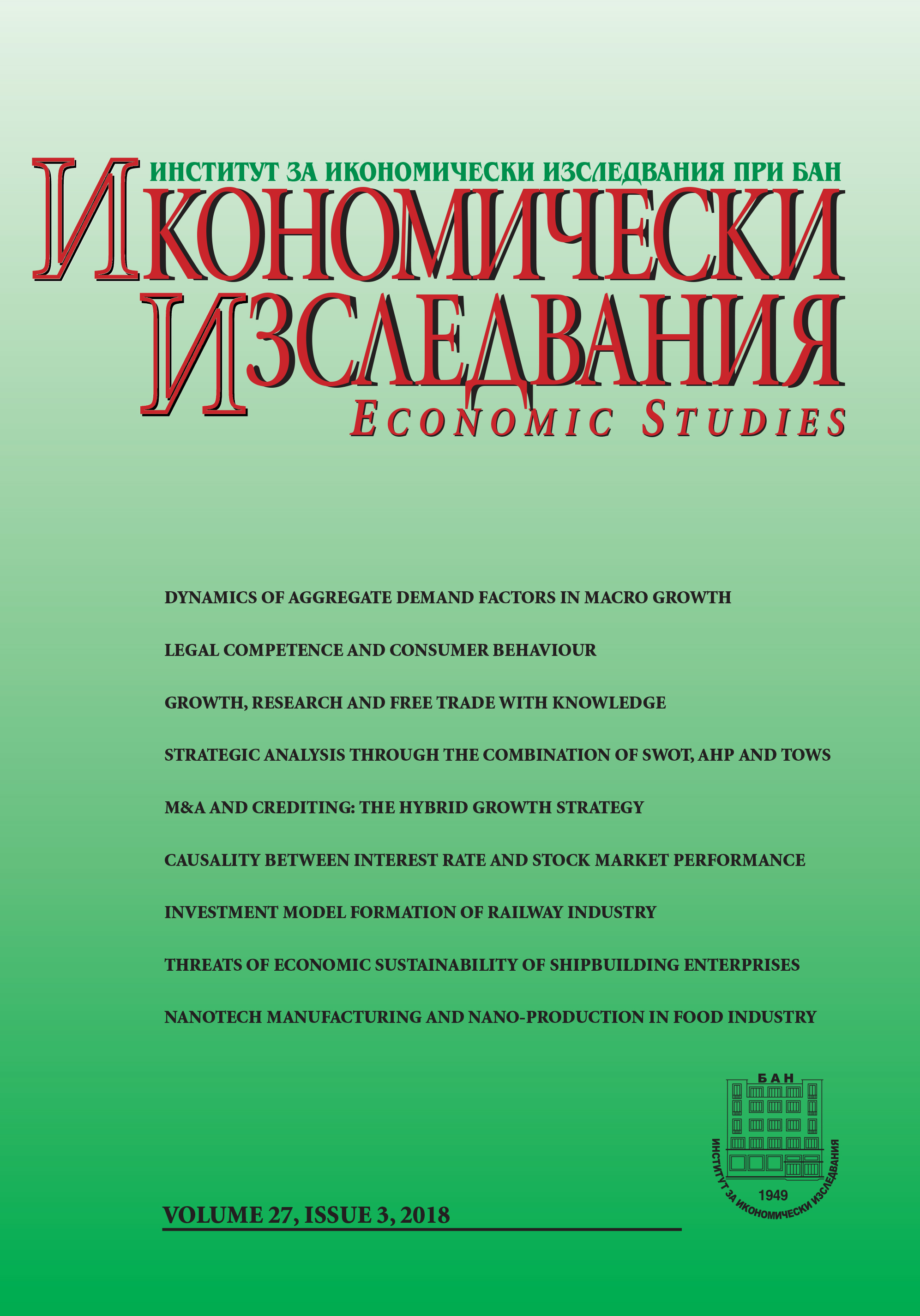Features, Characteristics and Methodology of Internal Control over Nanotech Manufacturing and Nano-Production in Food Industry
Features, Characteristics and Methodology of Internal Control over Nanotech Manufacturing and Nano-Production in Food Industry
Author(s): Plamena NedyalkovaSubject(s): Economy
Published by: Институт за икономически изследвания при Българска академия на науките
Keywords: JEL: M40; M42; L65
Summary/Abstract: Over the last years, the rapid pace of development of the nanotechnology industry has placed it as one of the leading industries, which occupies a significant part of the total world production share. The specific technology used in the nanotechnology industry, the distinctive features and characteristics of the final nano-production are prerequisites to seek for the proper mechanisms and methods of the implementation of internal control in nanotechnology enterprises. Therefore, the main objective of this study is to present the major control problems that exist and can be found in a nanotech company and the main control stages, procedures and methods for the implementation of internal control. Based on everything stated hereto, it can be assumed that the main objects of internal control in food-related enterprises which apply nanotechnology are: nanotech production; nanoproducts and products of nanotechnology development. Regarding the research problem of internal control of nanotechnology manufacturing and nano-production and internal control of research and development, the following main conclusions and recommendations can be drawn: 1) Internal control of the research control objects - nanotechnology manufacturing, nano-production, research and development - has not yet been established as the main means of revealing the behavior and modification of these objects; 2) No particular attention is paid to the analysis as a means of internal control. With the help of the analysis, the control process achieves a better diagnosis of the actual state of the controlled object, its planned and expected state. Applying the approved methodology of the internal financial analysis, together with the published data from the management accounting, the controllers can determine the reasons and the factors that influence the change of the controlled objects; 3) There is no interaction between internal control and controlling in the control practice, which in turn targets management and optimization of expenses, revenue management and management of the financial result of the enterprise. The two control concepts concerning internal control and controlling are still considered in isolation from each other. Because of the complexity of intertwining these two types of control (internal and controlling), the scope of the report has not been studied for their mutual application.
Journal: Икономически изследвания
- Issue Year: 2018
- Issue No: 3
- Page Range: 157-189
- Page Count: 33
- Language: English

